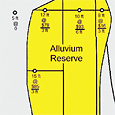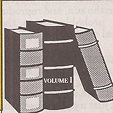All Articles
Legislative and Regulatory Update
March 2004 by Staff
• GAO opinion contradicts Norton-Leavitt road dealThe deal struck between Interior Secretary Gale Norton and former Utah Governor Mike Leavitt last year regarding ownership of roads in Utah violates federal law according to an opinion issued by the General Accounting Office (GAO).
The non-binding legal opinion states the deal contradicts a demand by Congress that it have final say over road disputes.
At the same time, however, Interior’s plan to surrender ownership of the roads did not technically violate the congressional prohibition said the GAO.
Interior Department spokesman Mark Pfeifle said the department strongly disagrees with the GAO’s determination that the Utah deal is illegal, but said Interior is pleased that its other arguments were validated.
“We intend to continue moving forward with implementation of that (agreement), which protects national parks, wildlife refuges, wilderness and wilderness study areas,” said Pfeifle.
The highway dispute stems from Revised Statute 2477, a law meant to encourage settlement of the West. RS 2477 granted states and counties rights of way across federal lands. The law was repealed in 1976, but Congress allowed states and counties continued use of the traditional routes and roadways, though Congress never disclaimed federal ownership of these routes.
Several states and counties have filed claims with the federal government for ownership of long-established routes in their jurisdictions. Use of these routes is important for ranchers, loggers, miners, and outdoor enthusiasts.
A complete review of RS 2477 and its history can be found under the Additional Resources section on our website (www.icmj.com).
• Cubin wages battle over public lands decisions
Gillette, Wyoming (AP)—Representative Barbara Cubin (R-Wyoming) says politics is trespassing on public lands decisions by the federal government.
Spurred on by a US Fish and Wildlife Service decision to list the Preble’s jumping mouse as threatened and two links on an Environmental Protection Agency Web site, Cubin said she feels a need to separate politics and science in the federal government.
“Environmental decisions should be based on scientific facts—not scientific opinions,” she said.
As a start, Cubin has asked the EPA to delete two links to non-governmental sites that provide information about toxic releases by ZIP code because the sites are operated by “extremist” groups.
The battles, her spokesman says, are part of a larger ideological war.
“I think it stems from the fact that EPA is still staffed with a lot of Clinton folks,” Joe Milczewski said. “You can’t undo eight years of Clinton administration work in three years of the Bush administration. It’s not possible.”
In a letter January 20, 2004, Cubin and Representative Jim Gibbons (R-Nevada), said it was inappropriate for the EPA to post links to the Environmental Defense and The Right To Know Network ZIP code search programs.
Cubin and Gibbons also criticized the EPA’s information published on its Toxics Release Inventory Program site, saying the data misleads the public by portraying large amounts of removed overburden materials as waste without explaining that much of the material is backfill.
“Thus, mining becomes the largest source of releases and the State of Nevada is unjustly held out as a major polluter,” they wrote.
EPA spokeswoman Suzanne Ackerman said the agency had received the letter and is considering the pair’s suggestions.
• Washington State rivers are open, work continues
The Resources Coalition continues working to improve conditions for small-scale miners in Washington State.
Several members of the Resources Coalition recently testified before committees in both the Washington State House and Senate regarding several bills meant to decriminalize small-scale prospecting.
The Washington State Department of Natural Resources (DNR) had declared the rivers in their state were off limits at an educational miner’s rally last year, which resulted in several legislators intervening on behalf of small-scale miners. DNR later backed off on the closure.
SB 6149 would deregulate hand-prospecting equipment. The Washington Department of Fish and Wildlife (WDFW) and DNR originally supported the bill. The bill passed out of committee. After the initial hearing, a sentence was added to remove hand prospecting from the permitting process. WDFW and DNR then reversed their support.
HB 2619 is a companion bill in the House.
HB 2349 is a separate House bill to deregulate hand-prospecting. The Resources Coalition continues to work out a compromise with WDFW and DNR to get this bill through.
HB 6333 would allow metal detecting in some areas of state parks. The Resources Coalition continues working on a compromise with the agencies regarding this bill.
For more information, visit www.resourcescoalition.org
• Recent FWS habitat, endangered or threatened proposals
The US Fish and Wildlife Service (FWS), proposes to designate critical habitat for the Santa Barbara County Distinct Vertebrate Population Segment of the California tiger salamander. Approximately 13,920 acres fall within the boundaries of the proposed critical habitat designation. The proposed critical habitat is located in Santa Barbara County, California.
The complete document can be found on the web at: www.regulations.gov/freddocs/04-01296.htm
For further information, contact: Field Supervisor, Ventura Fish and Wildlife Office, 2493 Portola Road, Suite B, Ventura, California, 93003 (phone (805) 644-1766; fax (805) 644-3958).
You may submit written comments and information to the Field Supervisor, U.S. Fish and Wildlife Service, Ventura Fish and Wildlife Office, 2493 Portola Road, Suite B, Ventura, California 93003.
You may send comments by e-mail to fw1CTSCH@r1.fws.gov. Address the email, “Attn: California tiger.”
Comments must be received by March 22, 2004. Requests for a public hearing must be received by March 8, 2004.
The FWS also published a 90-day Finding for a Petition To List Cymopterus Deserticola (Desert Cymopterus) as Endangered in Kern and San Bernardino counties.
The complete document can be found on the web at: http://www.regulations.gov/freddocs/04-02596.htm
The contact information and comment submission information is the same as for the above-mentioned tiger salamander.
Comments must be received by April 12, 2004.
It was somewhat refreshing to read the following information that was attached to the tiger salamander proposal:
Designation of Critical Habitat Provides Little Additional Protection to Species. In 30 years of implementing the Act, the Service has found that the designation of statutory critical habitat provides little additional protection to most listed species, while consuming significant amounts of available conservation resources. The Service’s present system for designating critical habitat has evolved since its original statutory prescription into a process that provides little real conservation benefit, is driven by litigation and the courts rather than biology, limits our ability to fully evaluate the science involved, consumes enormous agency resources, and imposes huge social and economic costs. The Service believes that additional agency discretion would allow our focus to return to those actions that provide the greatest benefit to the species most in need of protection.
Role of Critical Habitat in Actual Practice of Administering and Implementing the Act. While attention to and protection of habitat is paramount to successful conservation actions, we have consistently found that, in most circumstances, the designation of critical habitat is of little additional value for most listed species, yet it consumes large amounts of conservation resources. Sidle (1987) stated, “Because the Act can protect species with and without critical habitat designation, critical habitat designation may be redundant to the other consultation requirements of section 7.” Currently, only 306 species or 25 percent of the 1,211 listed species in the U.S. under the jurisdiction of the Service have designated critical habitat. We address the habitat needs of all 1,211 listed species through conservation mechanisms such as listing, section 7 consultations, the Section 4 recovery planning process, the Section 9 protective prohibitions of unauthorized take, Section 6 funding to the States, and the Section 10 incidental take permit process. The Service believes that it is these measures that may make the difference between extinction and survival for many species.
Procedural and Resource Difficulties in Designating Critical Habitat. We have been inundated with lawsuits for our failure to designate critical habitat, and we face a growing number of lawsuits challenging critical habitat determinations once they are made. These lawsuits have subjected the Service to an ever-increasing series of court orders and court-approved settlement agreements, compliance with which now consumes nearly the entire listing program budget. This leaves the Service with little ability to prioritize its activities to direct scarce listing resources to the listing program actions with the most biologically urgent species conservation needs.
The consequence of the critical habitat litigation activity is that limited listing funds are used to defend active lawsuits, to respond to Notices of Intent (NOIs) to sue relative to critical habitat, and to comply with the growing number of adverse court orders. As a result, listing petition responses, the Service’s own proposals to list critically imperiled species, and final listing determinations on existing proposals are all significantly delayed.
The accelerated schedules of court ordered designations have left the Service with almost no ability to provide for adequate public participation or to ensure a defect-free rulemaking process before making decisions on listing and critical habitat proposals due to the risks associated with noncompliance with judicially-imposed deadlines. This in turn fosters a second round of litigation in which those who fear adverse impacts from critical habitat designations challenge those designations. The cycle of litigation appears endless, is very expensive, and in the final analysis provides relatively little additional protection to listed species.
The costs resulting from the designation include legal costs, the cost of preparation and publication of the designation, the analysis of the economic effects and the cost of requesting and responding to public comment, and in some cases the costs of compliance with NEPA all are part of the cost of critical habitat designation. None of these costs result in any benefit to the species that is not already afforded by the protections of the Act enumerated earlier, and they directly reduce the funds available for direct and tangible conservation actions.
Keep in mind that many proposed rules or changes published in the Federal Register have such short comment windows (30 days) that they would be expired by the time the information reached our subscribers. We make an effort to publish these proposals on our website under the Recent News section. You can also check for new Federal Register notices (www.regulations.gov). From the list of agencies, select “Interior Department-All.”

Reserves and Resources Explained
 Reservers and resources are very important to prospectors and miners, but they may be vague terms to some.
Reservers and resources are very important to prospectors and miners, but they may be vague terms to some.
WANTED: Mining Poets, Singers & Storytellers
The hard-learned lessons, humor, tragedies and issues of work in mining have long been the subject of poetry, stories, songs and visual art by mineworkers and their families.
Mining Law—A Short History
 The General Mining Law of 1872 is not antiquated, but its roots are ancient, stemming from Greek and Roman law, and continued in English and Spanish law. The recorded laws and practices of mining extend back nearly 3000 years.
The General Mining Law of 1872 is not antiquated, but its roots are ancient, stemming from Greek and Roman law, and continued in English and Spanish law. The recorded laws and practices of mining extend back nearly 3000 years.
Company Notes
• AZCO Mining Inc.
• Great Quest Metals Ltd.
• Royal Gold, Inc.
• Altair International, Inc.
• Vista Gold Corp.
• Placer Dome
3D-Printed Tools for Prospecting
 …these two guys are part of the new hi-tech generation who review new technologies and are always looking for new ways to apply them in innovative fields!
…these two guys are part of the new hi-tech generation who review new technologies and are always looking for new ways to apply them in innovative fields!
Subscription Required:
The Bawl Mill
• Our Readers Say
• Fair and Balanced? If You Have the Cash
• Pocket Gold in Gneiss
• Australian Prospector Detects 150-Ounce Nugget
• The Tangential Impulse Water Wheel in California Gold Mining History—Part II
• Picks & Pans: Dredging After The Flood
• Mining Industry Enthusiastic About Prospects
• Looking For Gold in All The Right Places
• Fraser Institute Ranks Best Regions for Mining Investment
• Ask the Experts: Recommended Reading—Part II
• Red Lake, Ontario
• Company Notes
• Melman on Gold & Silver
• Mining Stock Quotes and Mineral & Metal Prices
Free:









